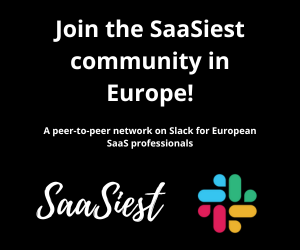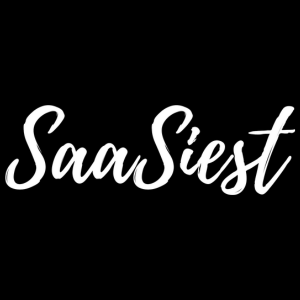
Barbra Gago, the CEO and Founder of Pando took the stage with a clear passion for the future of work. Having started her career as an early-stage operator in Silicon Valley, she’s now based in the Netherlands, bringing years of experience from companies like Greenhouse and Miro. Her expertise lies at the intersection of work and people-tech, where she has played a key role in building organizations to scale while keeping the human element front and center. In her talk, she explored how companies can rethink employee performance and development for a more effective, people-centered workplace. Here’s a recap of her insightful presentation.
A Post-Pandemic Inflection Point
Remote work: The pandemic forced companies to embrace remote work more rapidly than ever before. While remote work was already gaining momentum, particularly among engineering teams, the pandemic acted as a catalyst, accelerating this shift. “It wasn’t just a trend anymore,” she said, “it became a necessity.” Companies that previously resisted or only dabbled in distributed teams were now fully immersed in managing remote workforces.
Diversity + equity: The shift to remote work also brought diversity and equity challenges to the forefront. When employees are more distributed, these issues get amplified. Pay disparities, unequal opportunities, and representation issues became even more visible in this new work environment. The push for greater diversity and fairness, which had been growing steadily, suddenly became unavoidable for many organizations navigating this new normal.
Power dynamics: There’s also a changing power dynamics between employers and employees. “The tables have turned again,” she said, referring to how employees, especially Gen Z, have taken to social media platforms like TikTok to voice dissatisfaction with layoffs and unfair practices. This public scrutiny has forced companies to rethink how they manage talent, creating a new opportunity to redefine the employer-employee relationship.
What is Employee Lifetime Value
A key concept Barbra introduced was employee lifetime value, a metric she believes is crucial for the future of work. “We’ve all heard of customer lifetime value, where the goal is to increase how much value a customer brings over time. It’s the same with employees,” she explained. ELTV is a way to measure how much value an employee brings to an organization over their tenure.
This could be calculated by looking at revenue per employee and multiplying it by their average tenure. By focusing on this, companies can optimize how they onboard, retain, and develop their talent.
Progression, Not Just Promotion
To enhance employee lifetime value, organizations can take several steps. One approach is to reduce ramp time by onboarding employees more efficiently, allowing them to contribute sooner. Another is creating opportunities for upward mobility, helping employees advance further within the organization.
For example, Apple, a company of over 100,000 employees, has six engineering levels. Implementing multiple levels like this helps employees see a clear path for growth, encouraging them to stay and progress within the company.
It’s not just about promotions, progression can mean helping individuals develop skills and move to the next level, ensuring long-term retention. Providing clear expectations and well-defined career paths from the start prevents situations where employees are left uncertain about their roles, only to have their performance evaluated much later.
The Broken Performance Review System
Traditional employee performance reviews are fundamentally flawed. Most companies rely on annual assessments that focus on recent events rather than providing a holistic view of performance. This “waterfall approach” is time-consuming and often politically charged, leading to evaluations that prioritize office politics over meaningful feedback.
Barbra Gago noted, “We’ve been measuring employee performance all wrong.” While concrete metrics in sales and customer success are easier to define, many roles lack clear targets, resulting in an inefficient review process. Ultimately, this approach fails to deliver valuable insights, as the emphasis on pleasing colleagues can lead to inflated evaluations and an inauthentic understanding of employee performance. A reevaluation of performance metrics is essential for fostering genuine growth and accountability within organizations.
Beyond the Bell Curve and the 9-Box Model
Many organizations continue to rely on the bell curve model for performance evaluations, focusing on identifying the top and bottom 10% of employees. This approach promotes a competitive mindset that can hinder overall performance. As Barbra Gago emphasizes, “This is a broken way to think about it.”
Rather than concentrating solely on ranking individuals, the aim should be to elevate the entire workforce and create systems that enable everyone to excel. Investing in talent should be based on individual contributions and the value they bring to the organization. If an employee is delivering results, it’s crucial to ensure they are compensated fairly to retain their talent and drive continued success.
Employee Growth Velocity
Barbra introduced a new metric called employee growth velocity, inspired by her marketing background. It’s just as important to track the speed at which employees progress, just as organizations monitor how leads move through a sales funnel. By measuring this velocity, companies gain insights into employee development over time, fostering a more dynamic understanding of performance instead of relying on static annual reviews.
Employee Growth Score
On top of that, Barbra shared her vision for the employee growth score. This metric is all about continuous assessment, allowing organizations to keep tabs on employee performance in real-time. “We need to see how our people are evolving regularly,” she explained. By adopting this more dynamic approach, companies can tailor their support and growth opportunities, ensuring that each employee has what they need to thrive.
In the future, Barbra envisions performance management shifting from a top-down approach to a more bottom-up, ongoing process. “Performance should be something we talk about regularly, not just once a year,” she said. With a system that encourages continuous feedback, employees can grow and develop in real-time, rather than waiting for an annual review to find out how they’ve been performing.
A Future of Transparent and Structured Growth
To wrap up her talk, Barbra stressed the importance of creating transparent and structured environments that foster growth for every employee. “Contextualizing growth for each individual is crucial. When you have clear structures in place, it not only helps people grow but also enables you to build a more diverse and equitable workforce,” she explained.
She left the audience with a thought-provoking challenge: “Wherever you are in your performance journey, rethink it. The future of work demands it.” Barbra’s vision for employee performance centers on continuous growth, transparency, and a people-first approach, ultimately benefiting both individuals and the organization.




